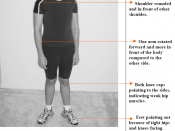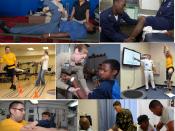"Cowboy mount, puller of plows, steed of Paul Revere, the horse has always been a contribution to human life, this time as a healing partner." Hippotherapy can be defined as a form of therapy that uses horses to develop the patients' physical being, as well as their emotional being. Therapists use the horses' rhythmic movements to improve muscle tone, balance, posture, coordination, strength, flexibility, and cognitive skills. The equines for hippotherapy are chosen carefully for the programs, taking in consideration their personality and height.
Therapeutic riding was first introduced to most of the world when Liz Hartel, diagnosed with Polio, won the silver medal in the 1952 Olympic Games for an equestrian event. Oddly enough, this event was dressage, maybe the most demanding of any riding sport, requiring enormous amounts of physical and mental strength.
Patients that can benefit from hippotherapy include people with Down Syndrome, Cerebral Palsy, psychotherapy patient, different visual impairments, and many other physical and mental disabilities.
Hippotherapy should be covered by insurance due to its physical and mental benefits, as well as its cost efficiency.
Hippotherapy has a great deal of physical benefits for people with disabilities. Hippotherapy can greatly improve its participant's flexibility, balance, and muscle strength. Increases in these areas are due to the similarity between a horses' gait and a human's movement. Some exercises used during hippotherapy to improve in these areas are figure eights, serpentines, and fun games that promote frequent starts and stops. Hippotherapy shows increased results by improving mobility for patients thought to be denied this human ability. In a case study, performed and written by Lehrman and Ross, a ten year old girl named Mary, with various disabilities, was followed through a ten week hippotherapy program. When first observed Mary used few verbal sounds, few functional signals, had moderate...


